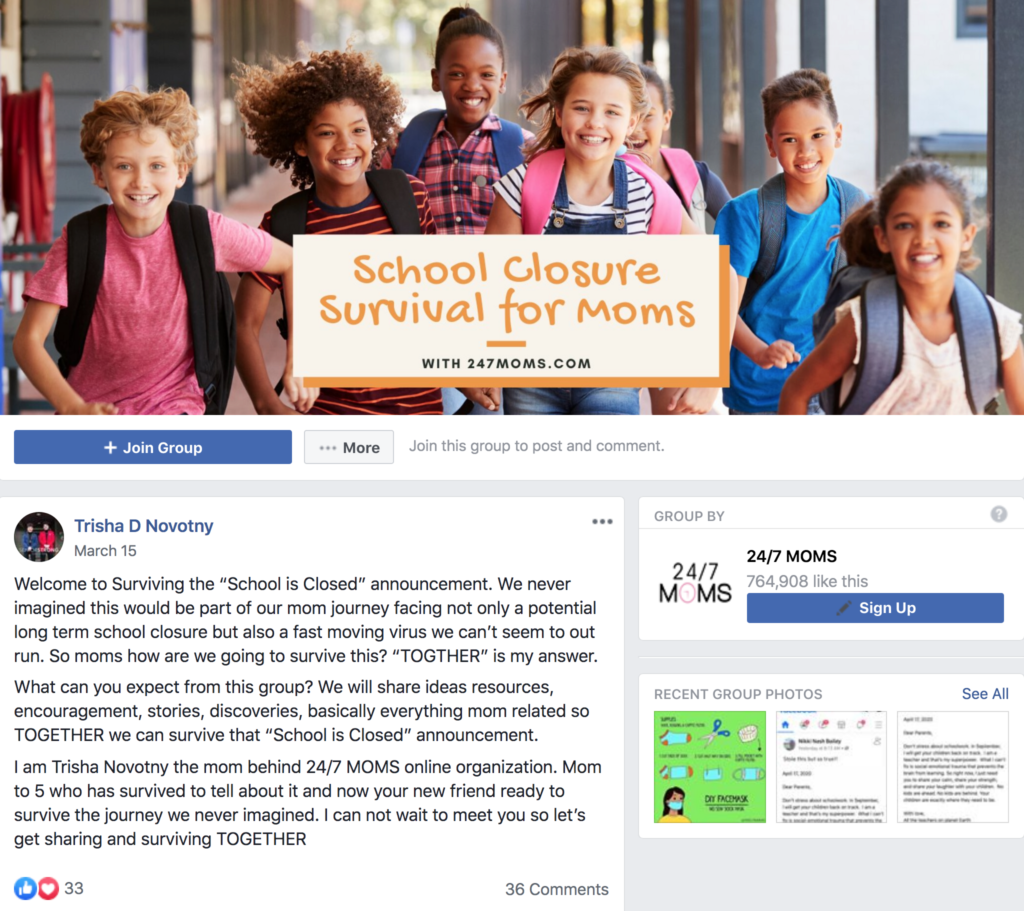How successful creators built an online community from the ground up
By Kaleigh Moore April 11, 2023
Ask successful creators what they would do differently if they could go back in time. One of the most common answers: start collecting emails earlier.
Why? Because people too often rely on social media for their outreach. Yet owning your own email list is more powerful. It puts the power of audience communication in your hands. It creates an online community.
And when your followers sign up for your newsletter, you don’t depend on social media algorithms to get your message out.
Yet even with a large following, building an online community for the first time can be tough. How do you turn casual social followers into true-blue email subscribers?
Let’s look at two creators who have already made the transition—and what they did to build an online community from the ground up.
Examples of creators who built communities
These two creators come from a similar niche. Yet the approach they took to build their online community wasn’t always a straight line. They didn’t push a button to convert a large following and instant community.
Instead, building an online community requires a strategic, sometimes nonlinear approach. Here’s what two AWeber creators did when they decided to grow their online communities:
Emma Johnson, “Wealthy Single Mommy”
Meet Emma Johnson, aka the Wealthy Single Mommy. She helps single mothers navigate every aspect of single motherhood: business, money, parenthood, dating, relationship advice, and more. Her advice on surviving and thriving as a single mom had already garnered some 2,000 email subscribers by the time she signed up for AWeber in 2014.
But she knew her audience was much larger than that.
Enter her lead magnet, 15 Steps to Thriving as a Single Mom. It was an eBook featuring the most important advice she’d assembled on her blog. And it didn’t cost readers a thing—except for inputting their email addresses.
Johnson didn’t hide her lead magnet in some dark corner of her website. Instead, she put it front and center, having it pop up whenever someone read her blog.

Between blog pop-ups, the main landing page of her website, and a free chapter for those who followed her on Facebook, her community took off.
She used AWeber’s custom sign-up forms to make sure she was leading with the lead magnet anywhere she had a web presence.
The results? After a humble 2,000-email start in 2014, she’s since grown the list to over 56,000 subscribers.
Trisha Novotny, 24/7 Moms
Trisha Novotny had a similar market: moms who wanted to become the best parents they possibly could.
But though the niche was similar, Novotny’s approach took on a completely different angle during the COVID-19 pandemic. 24/7 Moms became all about how moms could navigate the crisis.
Throwing aside all her other content, Novotny told her writers to drop their current projects. She created a daily Facebook Livestream, “Mommin’ It Daily,” and a Facebook Group called School Closure Survival for Moms.

Novotny knew that the best way to build an online community wasn’t to rely on one platform. Facebook was an amplifier. But a big Facebook community wasn’t the final goal.
Once she captured attention through Facebook, she echoed Emma Johnson’s strategy. She created lead magnets to capture much of that attention and bring people into the 24/7 Moms community.
Here are the takeaways she shared with us:
- The value of lead magnets: She called them an “awesome” way to interact with your audience. Not only do they provide (free) value, but they can be the first step in capturing enough emails to build your own community.
- Product giveaways: According to Novotny, one of 24/7 Moms’ biggest regrets was not collecting emails for years previous to COVID-19. She believes running product giveaways even prior to the pandemic could have strengthened her community for years.
- Moving off social media: “We don’t own the followers on Facebook, Twitter, and Pinterest,” points out Novotny. But converting those followers into members of an email list planted the seeds of a genuine online community. And it became one that didn’t rely on other platforms.
How to build an online community from scratch
Learning how to build an online community comes down to one skill: engagement. If you can generate enough value to engage your followers, you can start collecting emails. Here’s how the two creators above did it:
Tip #1: Learn the difference between amplifying and capturing.
For Novotny and 24/7 Moms, amplification was never an issue. A Facebook group and daily Facebook livestreams had plenty of interest from their community of moms.
But Novotny also knew she didn’t own this audience. She had to focus on value-adds like lead magnets and product giveaways to generate enough interest to capture emails to her AWeber newsletter community.
Tip #2: Lead with value.
In both examples above, followers were happy to fork over an email address because of the value of the lead magnet.
For Johnson, her lead magnet was an eBook she likely could have sold if she wanted. Instead, she gave it away for free. And Novotny created resources like printable Easter egg hunt sheets—available for free.
How do you lead with value? Consider creating resources the same way Johnson and Novotny did:
- Product giveaways
- Lead magnet eBooks/guides
- Printable worksheets
- Summary of the best advice you’ve given
Tip #3: Put the audience first.
In both cases above, the creators in question calibrated their content to their audience’s needs.
Emma Johnson knew which blog posts had the most audience resonance and used that information to build her lead magnet. Novotny made a daring pivot the second her market changed. Ultimately, her market rewarded her for it.
It’s time to transition to building your community
Learning how to build an online community isn’t just about adding followers to your Twitter, Pinterest, or Facebook platforms. It’s about generating enough value that people start coming to you. Once you control your own email list, there’s no platform that can fully control your online presence.
One of the best tools for drawing interest in your community is a lead magnet like Johnson’s or Novotny’s. To get started on your own, check out our post on how to create a lead magnet that works.
Once you’ve gotten the attention a lead magnet can draw, it’s time to sign people up. Start with a sign up page template from AWeber—and you’ll never have to rely on social media as the sole source of your community again.
And it all starts with an online community through email. Create your first sign-up page to get your community to opt-in to your email list. Start with a sign up page template from AWeber—and you’ll never look back.
 87% off ends soon!
87% off ends soon! 
